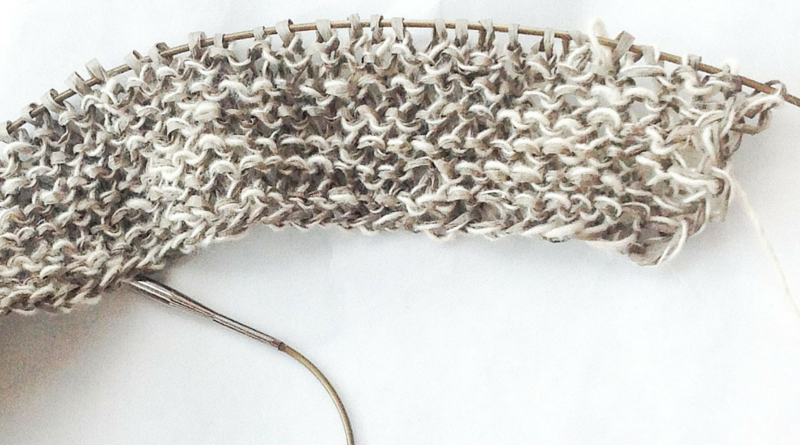Knitting Basics: What is Knitting Gauge?
Gauge is a very important concept in knitting. So what is knitting gauge and why is it important?
What Is Knitting Gauge?
In knitting, the word gauge is used both in hand knitting and machine knitting. In both cases, the term refers to the number of stitches and rows per inch.
In hand knitting, stitch gauge is measured by counting the number of stitches in a certain width. The next step is to divide the result by the width of the sample.
The same procedure applies to row gauge by counting rows per inch.
Parameters Affecting Gauge
The gauge of a knitted fabric depends on many parameters. Examples include the stitch pattern, yarn, needle size and the individual knitting tension.
Some knitters work loose stitches, others just don’t.
Ribbing and cable patterns tend to result in a higher gauge. They need more stitches per width.
Thicker yarns with less loft generally produce larger stitches than thinner yarns. Less stitches are needed per width and length in this case.
Larger knitting needles also produce larger stitches. Changing needle size is the best way to control gauge for a given pattern and yarn within a certain range.
Finally, the knitter’s tension, or how tight one knits, can affect the gauge significantly. It can even vary within a single garment, especially for beginning knitters. As knitters become more familiar with a stitch pattern, they produce a different gauge.
Sometimes the gauge is deliberately altered within a garment. This is usually done by changing needle size. Smaller stitches are often made at the collar, sleeve cuffs, hemline ribbing or pocket edges.
Uneven knitting is a knitting technique using two knitting needles of different sizes. This is useful when a knitter has a significantly different gauge on knit and purl stitches. It is also useful for producing elongated stitches and certain special patterns.
Knitting Gauge in Patterns
To knit specific dimensions the gauge should match as closely as possible. Significant differences in gauge will lead to a deformed garment.
Suppose a sweater is designed to measure 40 in. around the bust line with a gauge of 5 stitches per inch in the chosen stitch. The pattern should call for 200 stitches (5 sts / in. by 40 in.) at the bust line.
If the knitter knits with a gauge of 4 stitches per inch the sweater will measure 50 in. around the bust line (200 st at 4 stitches per inch) which is too big.
Conversely, if the knitter works with a gauge of 6 sts/in. the sweater will measure approximately 33 in. around the bust line (200 sts at 6 sts/in.) which means the garment will be too tight.
Adjusting Gauge
Gauge can be adjusted by changing needle size alone. This method works without altering the pattern, stitch, yarn, or habits of the knitter.
Larger needles produce a smaller gauge (fewer stitches per in.) and smaller needles produce a larger gauge (more stitches per in.).
Measuring Knitting Gauge
To check your gauge before starting a project, knit a small sample in your chosen yarn and needle size. It has to use the desired stitch pattern.
The edges of the swatch affect the gauge reading, so the swatch should be at least 4 by 4 in. wide. Bigger swatches increase accuracy.
Dividing the number of stitches used by the actual size of the sample gives the stitch gauge of that sample. Similarly, the row gauge is calculated by dividing the number of rows by the length of the sample.
Knitting a swatch also helps familiarize the knitter with the stitch pattern and yarn. This leads to a uniform gauge in the final garment.
when designing your own patterns, working a swatch is mandatory. Without proper gauge measurements, accurate gauge calculations are hard to create.
Do You Want to Know More?
A few links for further reading are listed below. Enjoy!


Pingback: Your First Shawl Design: The Art of the Start - knitting.today
Pingback: Shawl Design for Everybody - Your Free Shawl Design Online Course
Pingback: Improving Your Knitting Skills in 30 Days - knitting.today
Pingback: 365 Days of Shawl Knitting - knitting.today
Pingback: Knitting Square Shawls Center Out - knitting today